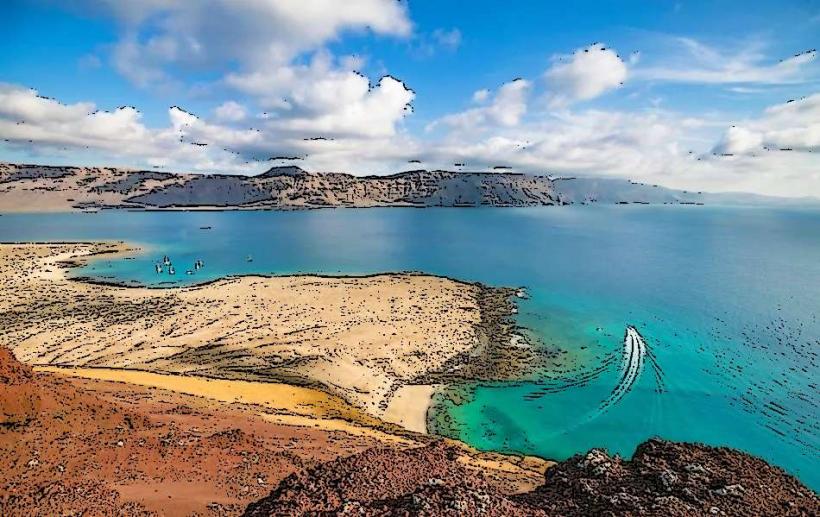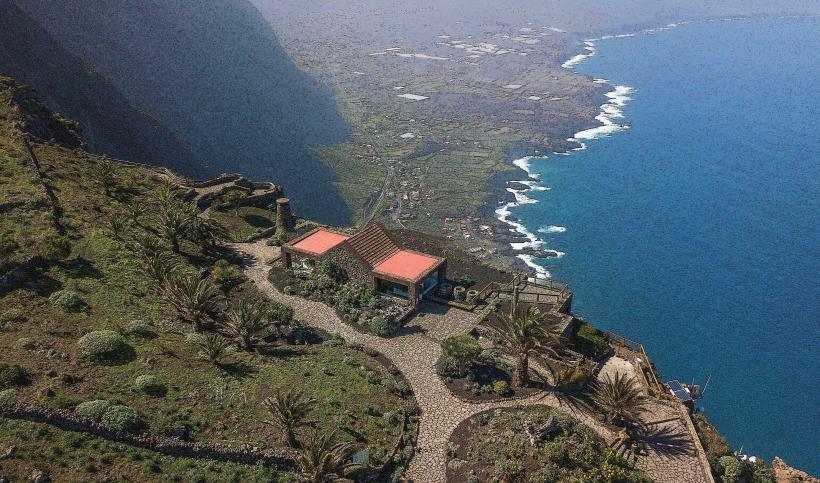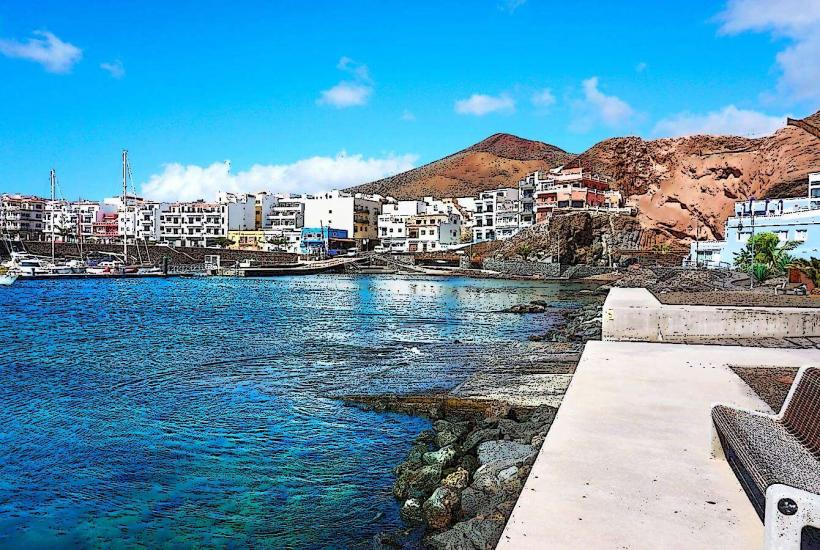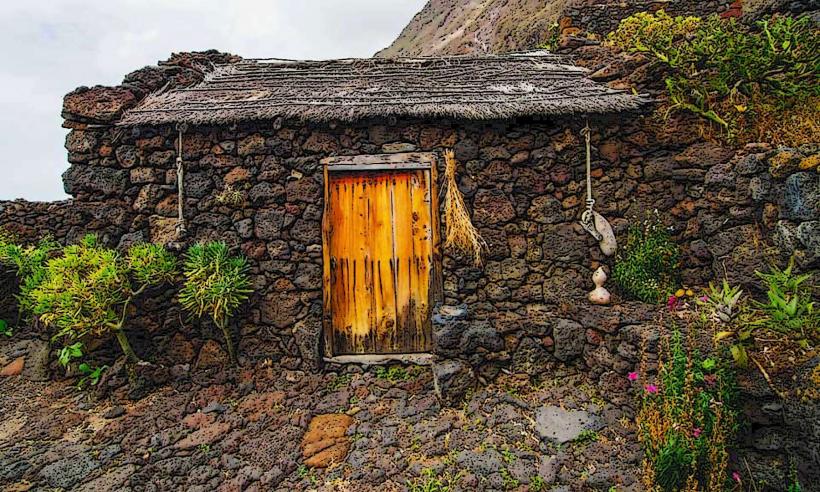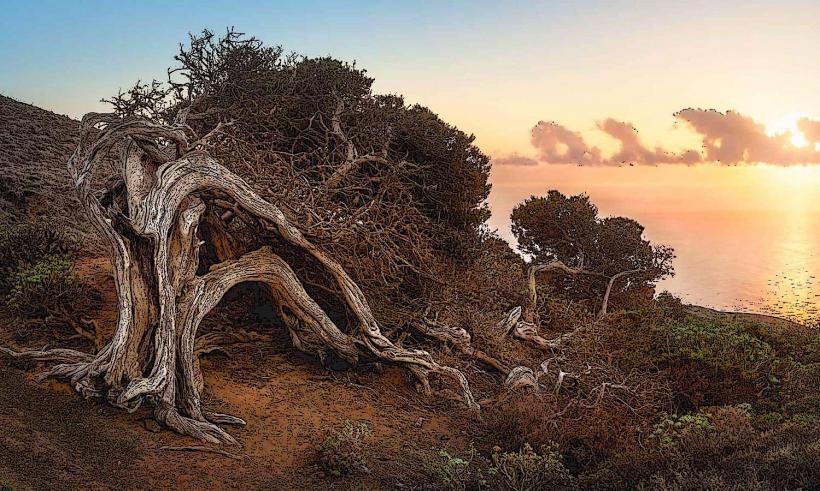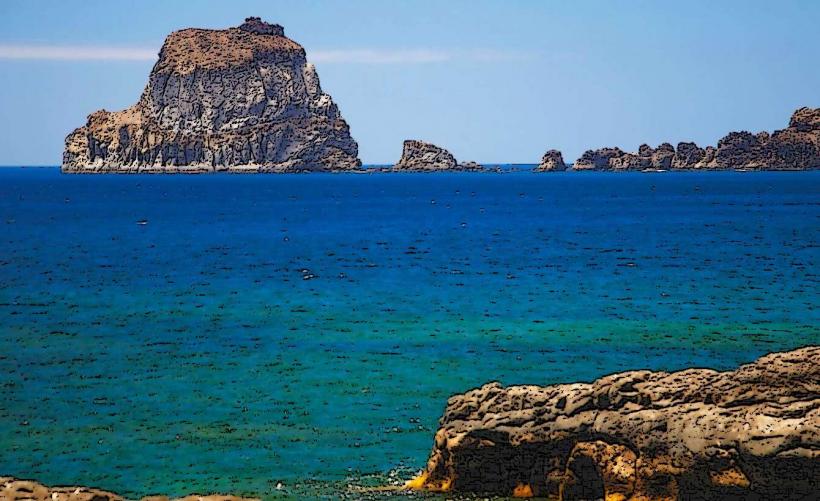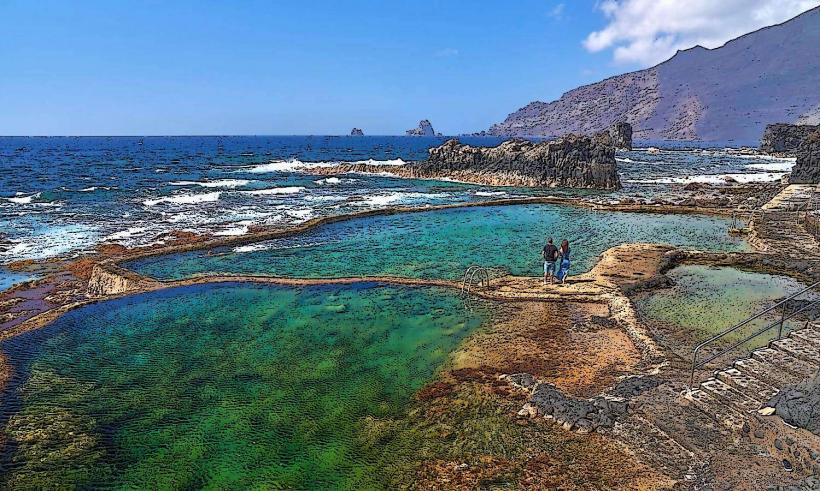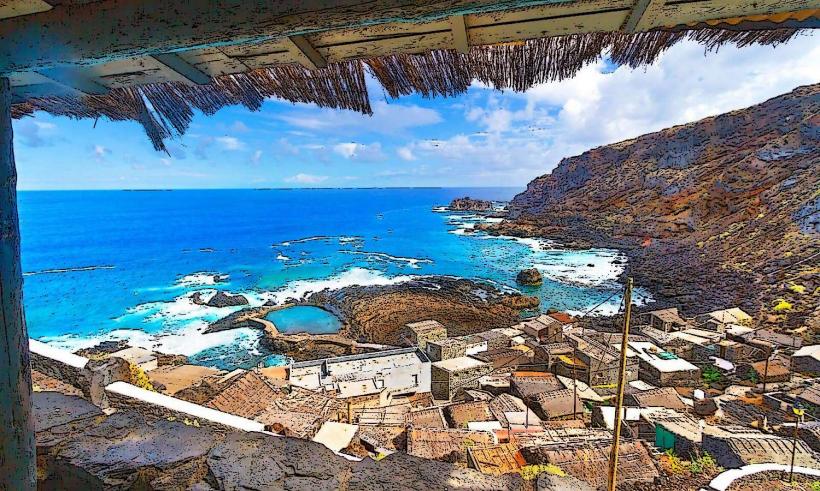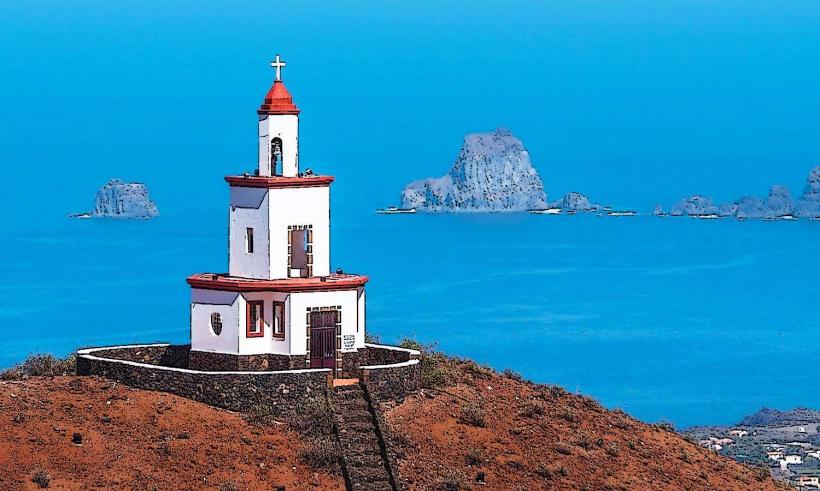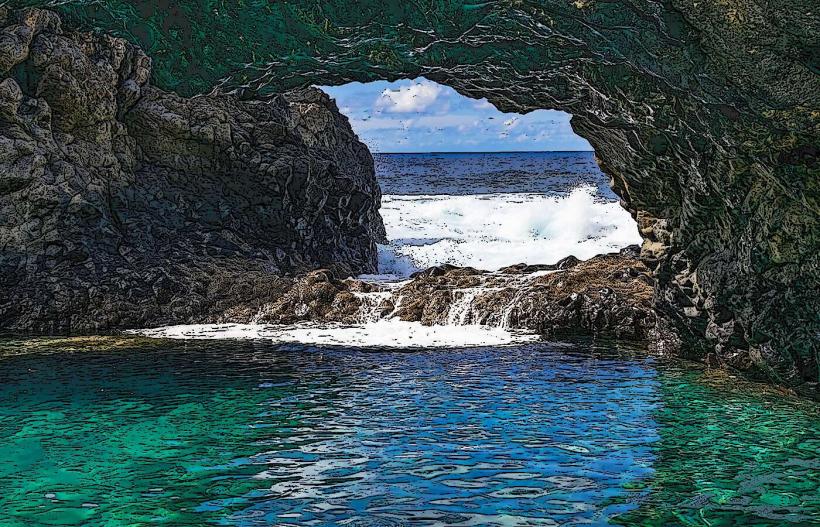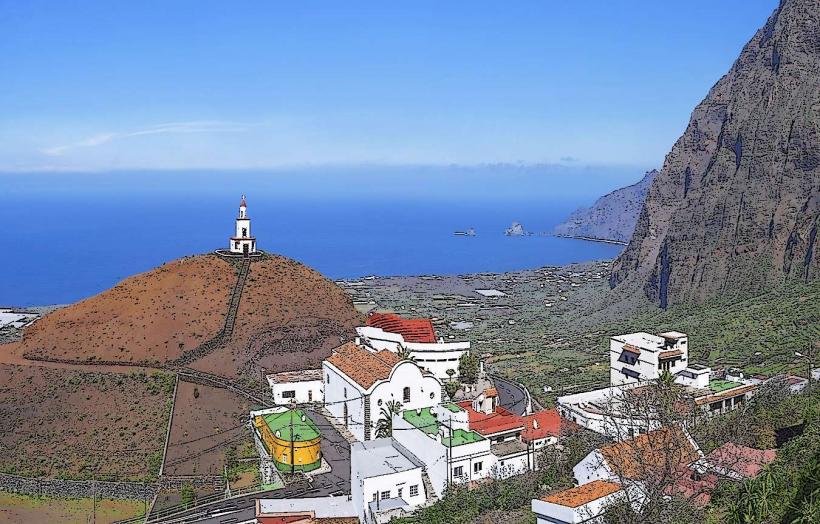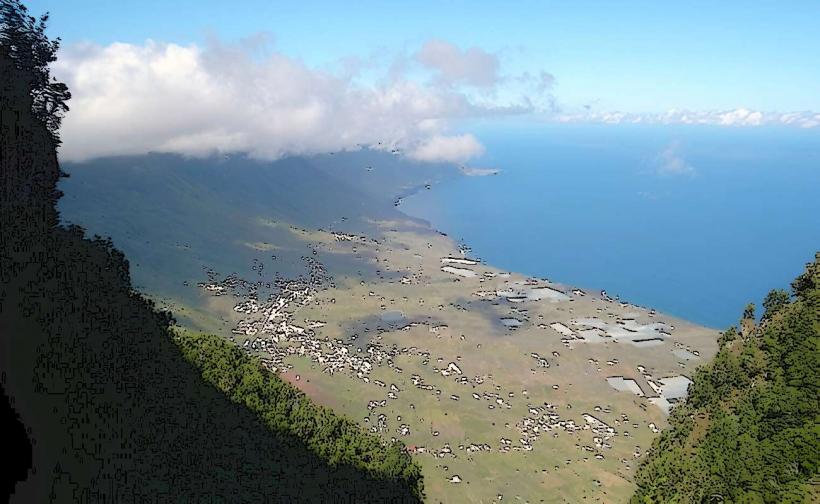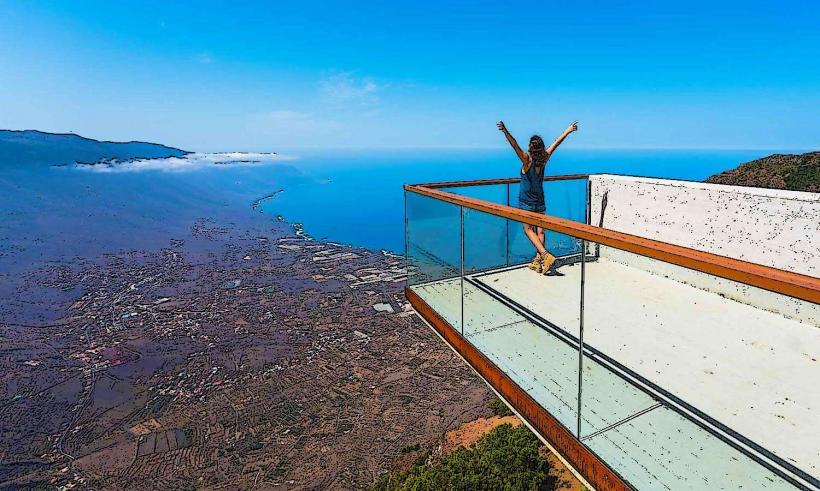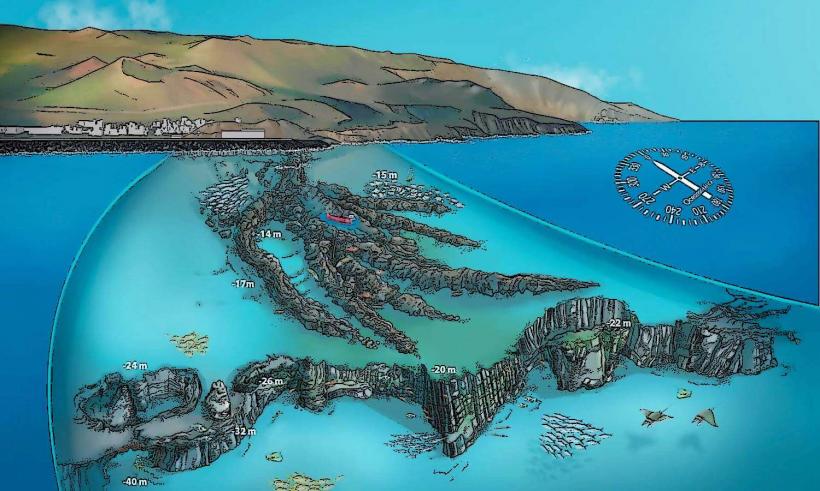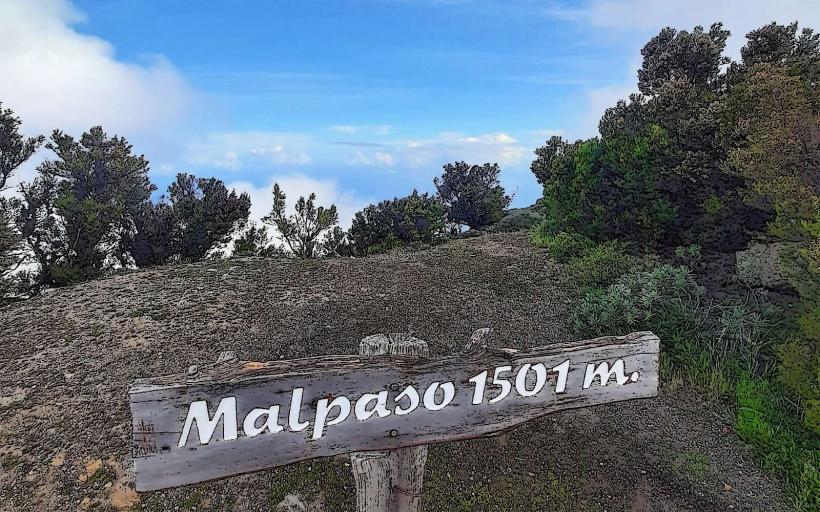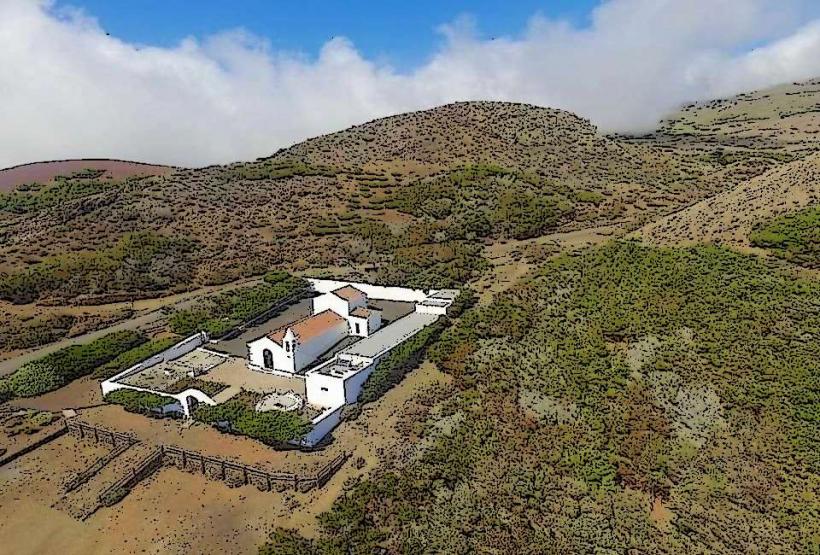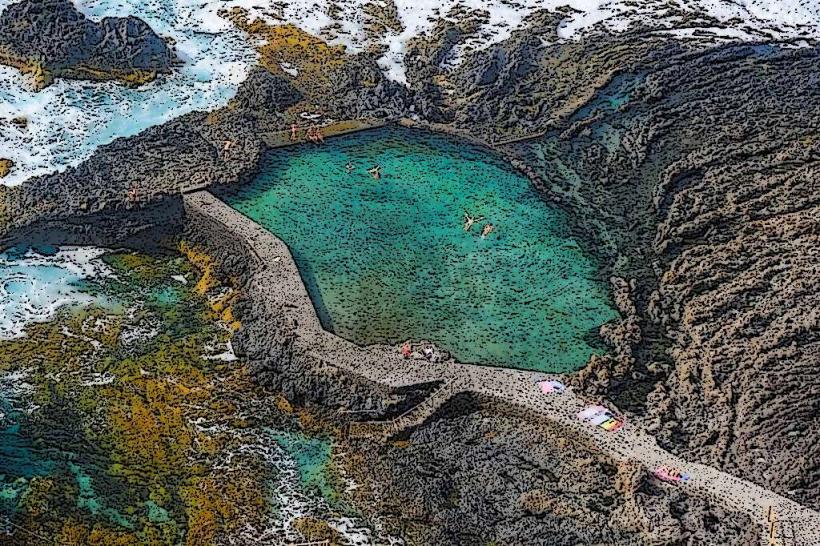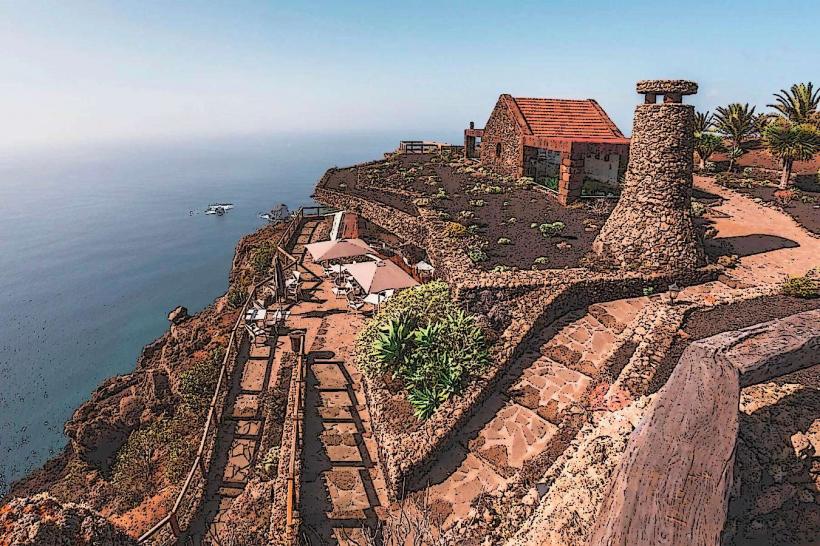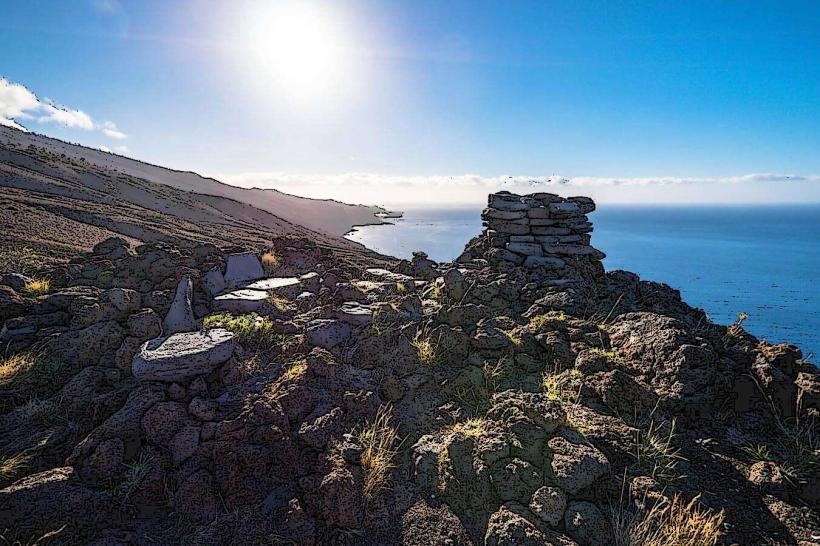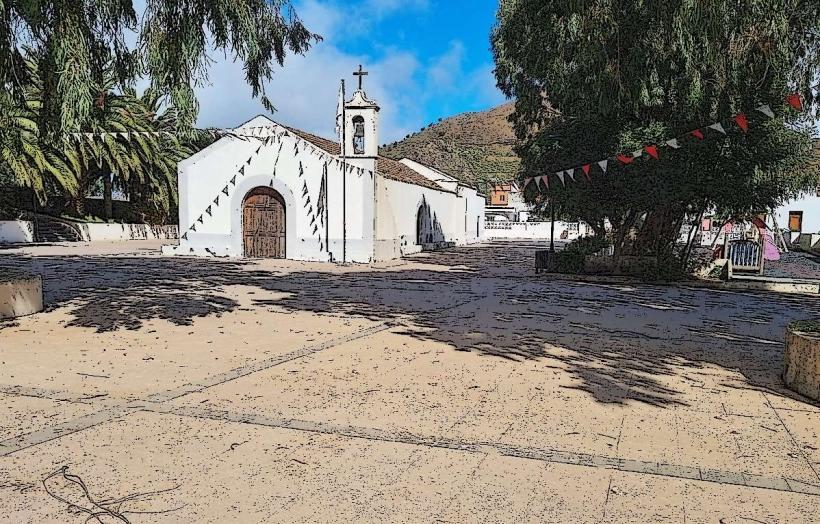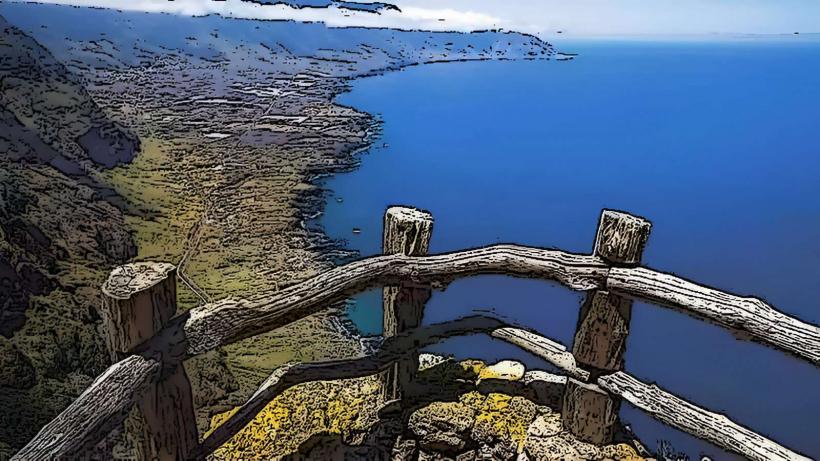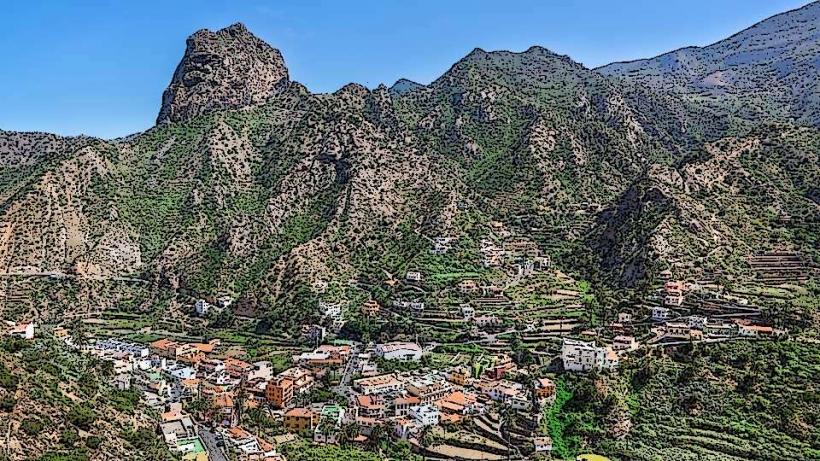Information
Landmark: El Sabinar de La DehesaCity: El Hierro
Country: Canary Islands
Continent: Europe
El Sabinar de La Dehesa is a notable area located in the La Dehesa region of El Hierro, one of the Canary Islands. This forest is renowned for its unique landscape of wind-sculpted trees, particularly the sabina trees (junipers), which have been shaped by the strong winds that prevail on this part of the island. Here’s a detailed look at El Sabinar de La Dehesa:
Location and Geography
- Location: El Sabinar de La Dehesa is situated in the northern part of El Hierro, within the broader La Dehesa region. It is easily accessible from the main road that connects the village of Valverde to other parts of the island.
- Geography: This area is located at a high altitude, offering panoramic views of the surrounding volcanic landscape and the island's rugged terrain. The region is characterized by its volcanic ridges, ravines, and cliffs, with the sabina trees growing along the exposed ridgelines and slopes.
Ecological Significance
- Flora: The sabina trees (junipers), which are central to the landscape of El Sabinar, are a defining feature of the area. These trees are twisted and contorted due to the strong winds that blow across the island, creating a dramatic and picturesque forest. The Canary Island juniper (Juniperus turbinata) is the most prominent species in the area.
- The trees often grow in stunted, twisted forms, creating a surreal and almost otherworldly atmosphere.
- The landscape is dotted with other Canary Island flora, including laurel trees, pine trees, and scrubland plants, all of which contribute to the area's biodiversity.
- Fauna: The area is also home to a variety of wildlife, including birds such as buzzards, pigeons, and the Canary Island sparrow. The El Hierro giant lizard (Gallotia simonyi), an endemic species to the island, is also found here, along with other reptiles and small mammals.
- The strong winds and harsh terrain mean that only certain species have adapted to thrive in this environment, making it a haven for wildlife that is specifically suited to the local conditions.
Landscape and Aesthetic Appeal
- Wind-Sculpted Trees: The most striking feature of El Sabinar de La Dehesa is the sabina trees themselves. The strong trade winds that blow across El Hierro shape the trees into twisted and gnarled forms, creating a visually stunning landscape. Some trees appear almost horizontal due to the constant battering winds, while others form unique, sculptural shapes.
- Breathtaking Views: From El Sabinar, visitors can enjoy spectacular views of the island’s volcanic landscapes, including the coastal cliffs of the northern coast of El Hierro and the distant ocean. The area provides an excellent vantage point for observing the island's natural beauty, with dramatic ridgelines and ravines visible from various spots.
Hiking and Outdoor Activities
Hiking Trails: El Sabinar is part of the La Dehesa hiking network, and there are several trails that lead through the sabina forest and surrounding areas. The hiking routes range in difficulty, from relatively easy walks to more challenging ascents.
- Trail Difficulty: The trails in the Sabinar area are typically moderate in difficulty, as they wind through volcanic terrain and forested slopes. Hikers may encounter rocky paths, windy ridges, and areas with steep inclines.
- Best Trail for Views: One of the most popular hiking routes in the Sabinar region is the trail that leads to the top of the mountain ridges, offering sweeping views of the island's rugged terrain and the Atlantic Ocean. The trails are well-marked and offer opportunities for visitors to experience the area’s natural beauty up close.
Photographic Opportunities: The twisted juniper trees and dramatic landscapes make El Sabinar de La Dehesa an excellent location for photography. Whether capturing the unique shapes of the trees or the expansive vistas, this area offers photographers a variety of subjects to capture, especially during sunrise or sunset when the lighting accentuates the natural beauty.
Picnicking and Relaxing: There are several picnic areas in and around El Sabinar, where visitors can stop to relax, enjoy the surroundings, and have a meal. The peaceful environment, combined with the cool mountain air, makes it an ideal place for a break during a hike or drive.
Cultural and Historical Significance
- Historical Uses: The area around El Sabinar has been historically used by the island's inhabitants for various purposes, including grazing land for livestock and wood gathering. The sabina trees were traditionally valued for their wood, which was used in construction and other island activities.
- Today, the forest is protected due to its unique environmental value and importance for the island's biodiversity.
- Cultural Identity: The twisted juniper trees have become a symbol of the natural heritage of El Hierro and are featured in various aspects of the island's local culture. The trees are often depicted in local art and are associated with the island’s deep connection to its natural landscapes.
Best Time to Visit
- Spring and Autumn: The best time to visit El Sabinar is during the spring and autumn months when temperatures are milder, and the area’s flora is at its most vibrant. These seasons provide optimal conditions for hiking and enjoying the forest.
- Summer: While summer can be warmer, the higher altitudes of El Sabinar offer a cooler respite. However, it is advisable to start early in the day to avoid the midday heat.
- Winter: Winter is typically cooler in the mountains of El Hierro, and the area can sometimes experience rainy or misty weather, which adds to the mystical atmosphere of El Sabinar.
Access and Facilities
- Getting There: El Sabinar is easily accessible from the village of Valverde via the main road that heads toward La Frontera. The area is well-connected to other regions of the island, and visitors can drive to the entrance points of hiking trails.
- Facilities: While the area is primarily natural and wild, there are some basic facilities such as information boards and picnic areas. Visitors should bring enough water, snacks, and any necessary hiking gear, as the area is largely undeveloped for tourism. For additional supplies and amenities, visitors can stop at nearby towns like Valverde.
Conclusion
El Sabinar de La Dehesa is one of the most unique natural areas on El Hierro, known for its wind-sculpted sabina trees and dramatic volcanic landscape. The combination of wild beauty, rich biodiversity, and outdoor activities makes it a must-visit destination for nature lovers and hikers. Whether you’re hiking through the forest, marveling at the twisted trees, or simply enjoying the panoramic views, El Sabinar de La Dehesa offers a glimpse into the island’s natural wonders and cultural heritage.

